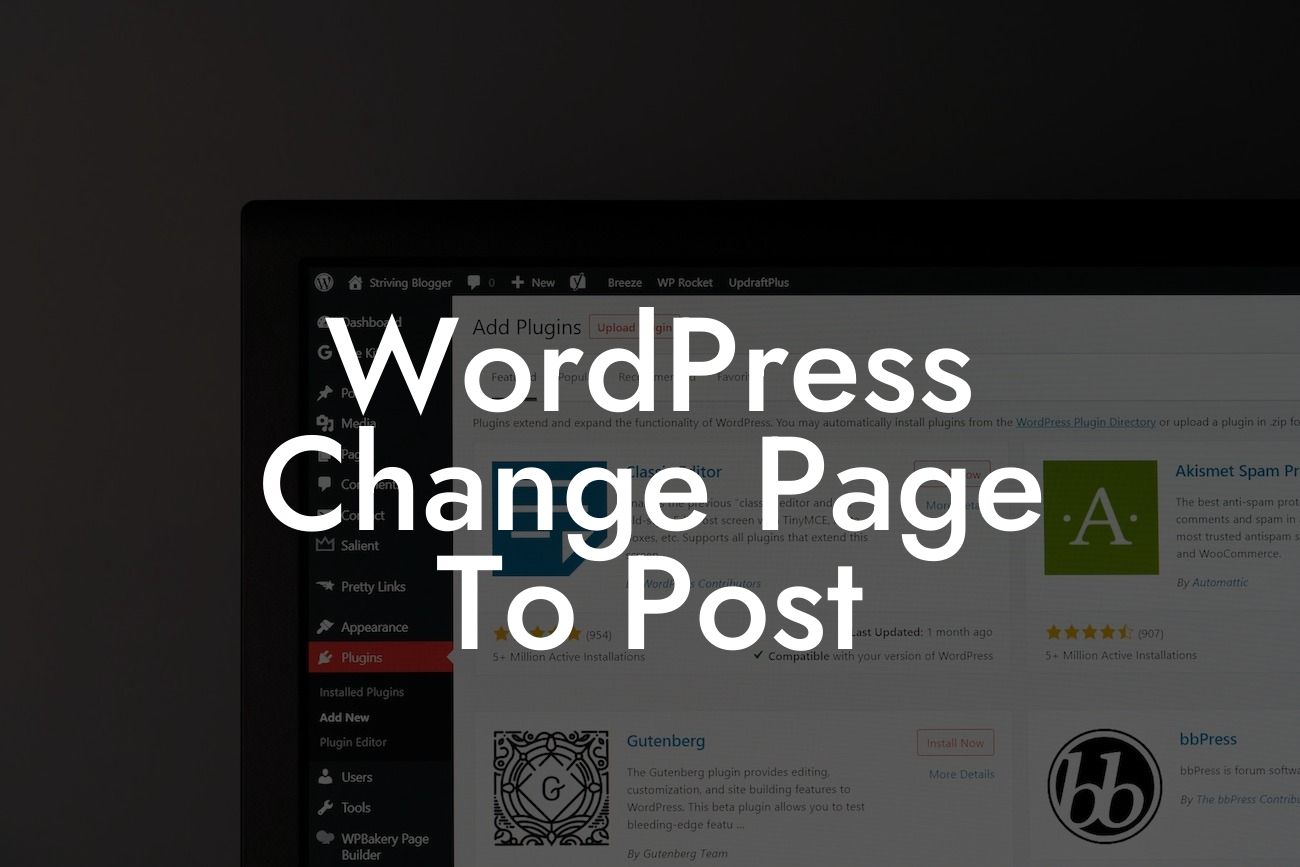Changing a page to a post in WordPress might seem like a daunting task, but with the right guidance and tools, you can unlock the full potential of your website. Whether you're a small business owner or an entrepreneur looking to level up your online presence, this article will provide you with an in-depth guide to transform your static pages into dynamic posts. Say goodbye to cookie-cutter solutions and embrace the extraordinary as we delve into the simple process that can supercharge your website's performance.
H2: Understanding the Difference Between Pages and Posts
Let's kick off by understanding the fundamental difference between pages and posts in WordPress. Pages are typically used for static content, such as your homepage, about us, or contact page. On the other hand, posts are dynamic, regularly updated content that appears in reverse chronological order on your website's blog feed.
H3: Why Convert Pages to Posts?
There are several reasons why converting pages to posts can benefit your website's SEO and overall performance. Firstly, posts allow you to categorize and tag content, making it easier for search engines to understand the structure of your website. Additionally, posts encourage regular updates, signaling to search engines that your website is active and relevant. By leveraging posts, you can drive more organic traffic and increase user engagement, which ultimately leads to a higher conversion rate.
Looking For a Custom QuickBook Integration?
H3: Step-by-Step Process to Change Page to Post
1. Login to your WordPress dashboard.
2. Navigate to 'Pages' and select the page you want to convert.
3. Edit the page and copy the content.
4. Create a new post by going to 'Posts' -> 'Add New.'
5. Paste the content into the post editor.
6. Customize the post settings, including the title, category, tags, and featured image.
7. Publish the post.
H3: Wordpress Change Page To Post Example:
Let's consider a small business owner named Sarah, who previously had a static page showcasing her products. By converting it into a post, Sarah gains the ability to provide regular updates about product launches, share customer success stories, and engage her audience through comments. This post allows her to build an active community, generate more organic traffic, and ultimately boost her sales.
Congratulations! You've learned how to change a page to a post in WordPress, taking a crucial step towards supercharging your website's performance. Now, it's time to explore other guides on DamnWoo to unlock more tips and tricks for your digital strategy. Don't forget to try one of our awesome WordPress plugins designed exclusively for small businesses and entrepreneurs. Share this article with others who can benefit from it, and together, let's embrace the extraordinary in our online presence.













